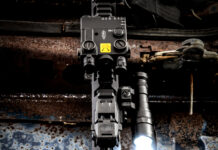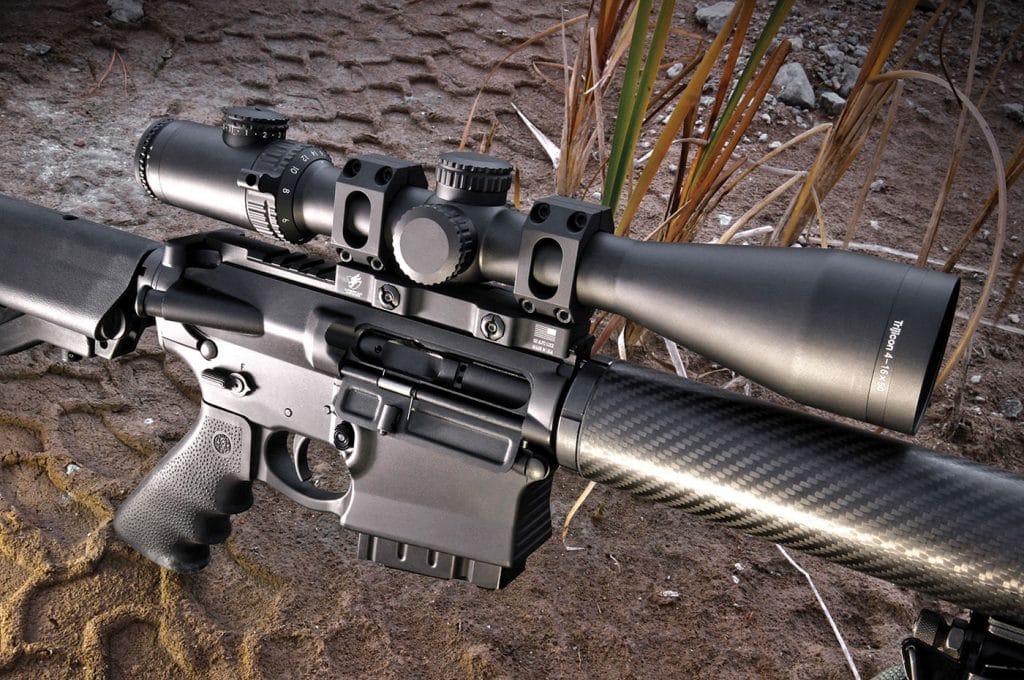
For testing, I mounted a Trijicon 4-16x50mm AccuPower scope (trijicon.com) in and ADM quick-release mount (americandefensemanufacturing.com) on the Compact Hunter and tested it with five factory hunting loads, rather than match loads, to see how the rifle would perform in the role it was designed for.
Functionally, the rifle fed, fired, extracted and ejected without issue. There are, however, a couple of things I’d change on the rifle, mostly due to personal preference.
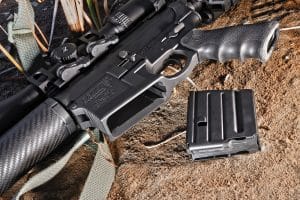
The first is the bolt catch. Initially, it would not lock back consistently when shooting one load. Closer inspection revealed that the bolt catch was binding slightly and failing to raise the shelf high enough to engage the bolt. I opened the rifle up and worked the mechanism up and down manually for several minutes, and that completely cured the problem. Still, I would likely swap out the bolt catch for something like the DPMS tactical-style catch, with twin paddles, which I prefer over the pointy release button on a standard catch.
I would also probably change the trigger, which I frequently do on ARs. From the factory, the rifle comes with a two-stage DPMS trigger that broke consistently at a pull weight of 5 lbs., 2 oz, with a barely-perceptible hint of creep on a very slow trigger pull. It’s a perfectly acceptable trigger for most applications, but I prefer hunting triggers to be a couple of pounds lighter. With light rifles, especially, an unnecessarily heavy trigger pull can adversely impact accuracy, and I’m confident groups on paper would shrink with a lighter trigger.
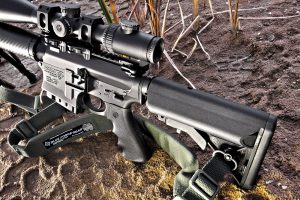
Even so, the rifle shot pretty well with the factory trigger. Average groups at 100 yards were around an inch and a half for most of the tested factory hunting loads, and that will definitively get the job done in most hunting situations. Two of the tested loads turned in sub-MOA best groups, hinting at the rifle’s true accuracy potential.
Velocity testing yielded a couple of surprises at both ends of the spectrum. You would expect some velocity drop-off from the rifle’s 16-inch barrel, but I was initially surprised that Hornady’s American Whitetail 150-grain. Interlock load showed a whopping 306 f.p.s. loss from factory-claimed velocity. I then remembered that Hornady uses SAAMI-specification test barrels, which are mostly 24 in. for rifles, so that handily accounts for the difference. At the other end of the scale, Federal’s new 150-grain Fusion MSR (Modern Sporting Rifle) round was only 68 f.p.s. slower than factory-stated velocity out of the rifle’s shortened barrel. That’s because the MSR ammo uses faster-burning powders to achieve optimal velocity out of the shorter barrels typically employed on AR platforms. If you take these two loads out of the equation, average velocity drop from factory-stated velocities for the remaining three rounds was 152 f.p.s, which isn’t enough to get worked up about at average hunting distances.
Some have opined that a lightweight AR chambered for .308 Win. ammo results in an objectionable amount of recoil. That wasn’t my experience with this rifle. I hardly noticed the recoil in two days of high-volume shooting, and I would gently suggest that anyone who finds the recoil objectionable probably hasn’t spent much time shooting anything more potent than a .223. Contact DPMS, Dept. OT; Tel.: (800) 578-3767; Web: www.dpmsinc.com
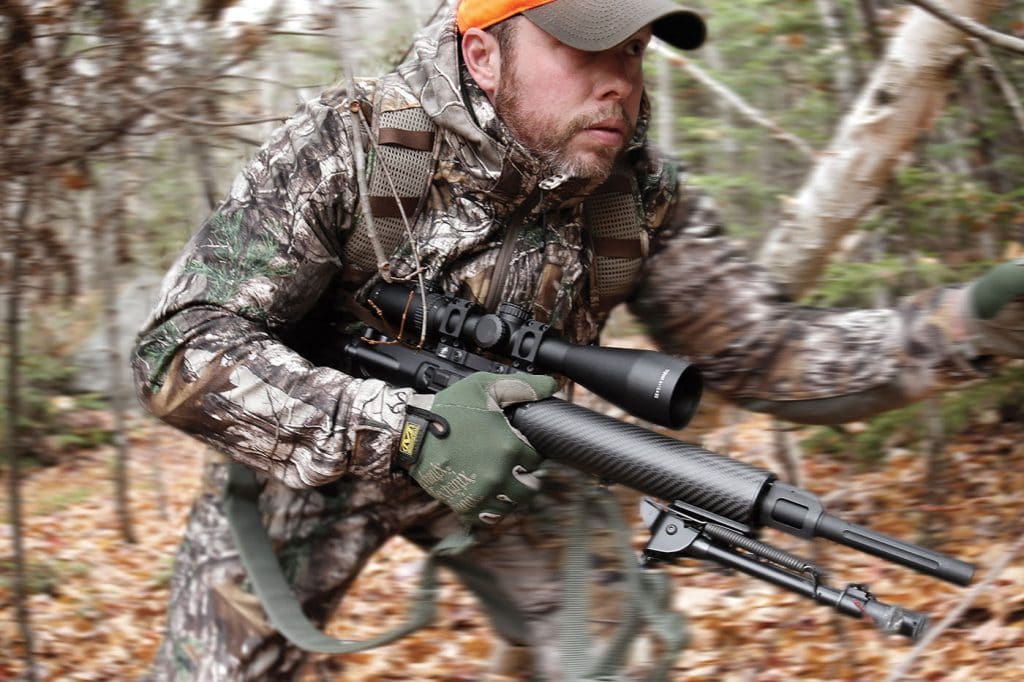
DPMS GII Compact Hunter 308 Win.
AVG. MUZZLE AVG. BEST
LOAD VELOCITY GROUP GROUP
Federal 165 gr. Trophy Copper 2,539 f.p.s. 1.55” 0.67” Federal Fusion MSR 150 gr. 2,702 f.p.s. 1.46” 1.20” Federal 165 gr. Trophy Bonded 2,568 f.p.s. 1.70” 1.51” Hornady 150 gr. American Whitetail 2,514 f.p.s. 1.41” 0.94” Hornady Full Boar 165 gr. GMX 2,447 f.p.s. 1.57” 1.30”
SPECIFICATIONS
Action: Direct-impingement semi-auto
Caliber: 308 Win.
Barrel: 16 in. stainless steel
Rate of twist: 1:10
Barrel Finish: Teflon-coated
Upper Receiver: Forged 7075 T6
Lower Receiver: forged 7075 T6
Stock: B5 System Sopmod
Trigger: two-stage DPMS
Handguard: Carbon-fiber free float
Pistol Grip: Hogue
Weight: 6.9 lbs
Length: 32.5 to 36
MSRP: $1,599.00
















